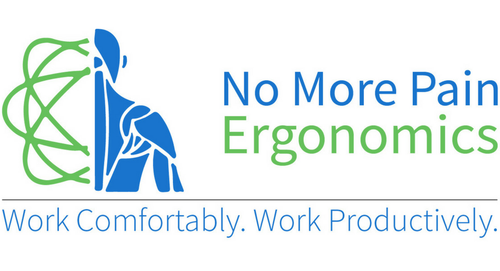-
Shop
- 🔥 Warehouse Clearance Sale 🔥
- Ergonomic Mice
- Ergonomic Keyboards
- Specialised Ergonomic Mice
- Standing Desks
- Ergonomic Chairs
- Laptop Stands & Risers
- Monitor Risers
- Computer Monitor Arms
- Footrests
- Wrist and Forearm Supports
- Back Supports
- Tablet Accessories
- Boardroom Chairs
- Headsets
- Other Ergonomic Equipment
- Online Ergonomic Training Courses
- New Products

- For Customers
- For Business Customers
- For Health Professionals
- About Us
- Reviews
- Product Recommendation Tool
The keyboard is one of the most important and frequently used tools in the modern office today, however many users have experienced wrist and hand pain due to its misuse. Issues arise when the user experiences tingling and numbness in the hand, which can then become painful and cause injuries such as RSI conditions. Fatigue is also a health implication when a user performs the task of typing incorrectly.
In this blog post we will explain some safe typing practice to avoid wrist pain, how to adjust your workstation to ensure it is set up correctly for typing, and how and when to rest to ensure you are working as healthily and comfortably at work.
Working at a computer doesn’t seem like a particularly dangerous activity. However, over time repetitive actions such as those involved in keyboarding can put a strain on the muscles, tendons and nerves in the arm, wrist, fingers and hand. In the same way as a professional athlete can suffer from chronic pain, a typist who spends extensive amounts of time at the computer may experience pain that won’t go away.
Let's look at some factors to consider to ensure you are working with your keyboard optimally:
If You Are Already Experiencing Pain: Consult your health professional.
We recommend you firstly consult with your GP and a Physiotherapist or Occupational Therapist. Seeking medical advice and treatment will help speed up your recovery.
Posture.
While sitting at your desk comfortably, check the below to see if you can obtain this position:
- Your feet should be flat on the floor with your knees bent at a 90-degree angle
- Your screen should be at eye level
- Ideally, your head should be aligned with your spine
- Your knees should be over your feet
- Your pelvis tilted slightly back so your weight is resting on your sit bones
- Keep your arms loose
Never hunch over the computer and if you use a laptop, take extra care and pay attention to your posture.
If you’re doing a lot of work on a laptop you might consider purchasing a wireless keyboard, like the one below, which will now bring us to the next factor...
Keyboard Position.
When setting up your computer workstation it’s important to have your chair at the right height.
You want to ensure your wrists are not pressing against the hard edge of a table or desk and that they aren’t so high you have to bend them to reach the keyboard.
Placing the keyboard on a flat surface at the same level as your elbows will help you with this. You can also have it slightly below your elbows, but it should never be higher.
If your keyboard is placed further back on your desk you may inadvertently rest your arms on the desk, which can also cause strain - we recommend to place the keyboard no more than 12cms from the front edge of the desk.
Place the keyboard so that the letter 'B' is in line with your belly button so that the keyboard is positioned directly in front of your body.
TOP TIP: Using a wrist support (such as the product below) can remind you not to rest your wrists on any hard edges, just remember the this support is for use between typing sessions and should not be used when you are actually typing.
Hand Position.
Before beginning a keyboarding session, consider the following:
- Remove any chunky jewellery such as bracelets or heavy rings
- Stretch the muscles in your fingers, hands and forearms both before and after typing (check below for an example stretch video!)
- Keep nails short to allow you to press the keys correctly
Keeping the hands in a neutral position is crucial. Avoiding wrist injury requires you to type with your hands and wrists straight. If you find that your cannot help but place your hands in an ulnar deviation (such as below), and you are experiencing pain at the wrist due to this, you may need to look at an alternative style keyboard, such has the folding split keyboard to create more of a neutral position in the wrist and hands.
TOP TIP: Have a quick look down next time you are typing to see what position your hands and wrists are in. Alternatively, you can ask a friend to take a picture of you so you can self-correct if there is any torquing.
Image: Ulnar deviation at the keyboard.
Stretch every 30 minutes.
Regular stretching promotes blood circulation, movement, and gives rest to a working hand and wrist. The video below is an example of some great hand and wrist exercises to reduce stiffness and pain.
Typing technique.
Believe it or not, there is a right and wrong way to type to reduce risk of future injury.
For some users, it is sometimes difficult to judge the amount of pressure needed to hit the keys on a keyboard. In the early years of the keyboard's existence, traditional keyboards required a lot of force to type. These days with an ergonomic keyboard only slight pressure is required and pushing down harder can both increase your chance of injury and result in a key being registered twice by the computer, an error known as ‘Sticky Keys.’ If you find your typing technique could be improved, try a typing course that can guide you through how to perfect a healthy way to type.
If you follow a touch-typing course, you’ll know that the resting position of any typist is the home row and that each finger is responsible for the keys in its direct radius. However, people who have small hands may want to adjust their technique for hitting hard to reach keys to avoid added strain.
Another factor to consider with typing technique is to raise your wrists so that the knuckles between your palm and fingers are level/straight (similar to the correct piano playing position for all you musically educated individuals!). Don't rest your wrists on the desk while typing as this results in your intricate fingers muscles to take more of the workload than your larger muscles in the hand which can cause pain in the fingers and hand and increasing the chances of carpal tunnel syndrome.
Download our step-by-step guide.
We've developed a comprehensive guide to help you review your workstation and ensure it is best setup to minimise aches and pains and promote your comfort.
Summary.
To avoid future injury to your wrists and hands while performing typing tasks, follow the below:
Maintain proper posture.
Set up your workstation correctly.
Pay attention to the position of your hands.
Stretch your muscles before and after typing.
Monitor your technique.
We hope this has given some incite into the importance of finding the right way to use the keyboard while you work, and if you have any questions, please feel free to reach out to our team!







